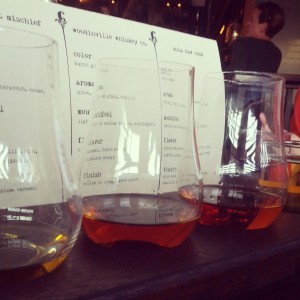As the semester draws to a close, I’ve begun to reflect seriously on my first year as a freshman advisor through Creighton’s Ratio Studiorum Program. What were may successes? Where were my missteps? What can I improve as I prepare for a new group of freshmen in the 2014-2015 academic year? I could probably write a novella about the experiences, but instead I’ll leave you with some bullet points.
Missteps:
- Share, but don’t over share – This is really difficult. As an advisor, you want to help students avoid some major pitfalls. Learning to do this without sharing too much personal information or college stories I found very, very difficult. A fellow librarian pointed out early on in the fall semester that by over sharing I may be unintentionally blurring the line between instructor and friend. Because I’m not their friend; I’m their instructor and advisor. I need to work on this for the new year.
- My students are not me – The problems and challenges I faced as a student are not the same as the ones my students face. The same can be said for what came easily to me. This may seem obvious to some, but as I grew comfortable with my students, it was difficult to draw this distinction. Over time, I improved at this. When students asked about Greek life, studying abroad, or classes at Wisconsin, I began to give the response, “You can’t compare my experiences at Wisconsin to yours at Creighton. They are two completely different schools in almost every way imaginable.” They seemed to accept this. As they grew accustomed to Creighton, they understood this more.
- Effective assignment design – So I’m instructor now… I guess I need to create graded assignments? I had a nonchalant attitude about this at the start of the semester and by the time I recognized this, it was too late. I will be applying what I learned at Immersion and various campus professional development workshops to my next class.
Successes:
- Building community with students – An essential goal of the course is building community to retain students at Creighton. I believe I accomplished this. From day one I tried to build a comfortable, safe classroom environment for my students. Our candid discussions about roommates, mental health, alcohol, diversity, and becoming an independent adult reflect this. I see it when I pass a student on the mall and they’re with another classmate.
- Building community with faculty – Librarians at Creighton do not have faculty status. One of my goals in becoming a Preceptor was to build stronger relationships with faculty and academic staff across the College of Arts and Sciences. Since I’m nearing the conclusion of my second year at the University, relationship building remains an essential part of my job. Teaching RSP allowed me to meet faculty in and out of my liaison areas and strengthened existing relationships, evidence of which can be seen in the Library’s instructional programming.
- “Can you help my friend?” – Being as an advisor made me a little nervous. I had to learn the curriculum and campus resources quickly. There were definitely some rough spots, but I knew I had done my job well when my students began bringing in friends with their advising questions. I’d be sitting at my desk, when one of my students would walk in with a friend who had an advising question. They brought them to me because they valued my advise. An advisor’s goal is the success of their students, which aligns perfectly with the Library’s mission. It was a perfect marriage between my goals as a librarian and instructor/advisor.
It has been an incredibly rewarding experience both professionally and personally. My love for teaching and working with students increased exponentially. I’ll continue to work at it, learning as I go. Modeling lifelong learning for my students as their instructor, their advisor, and their reference librarian.


